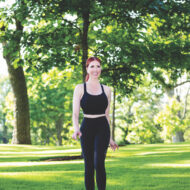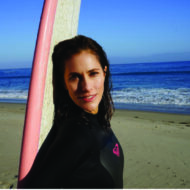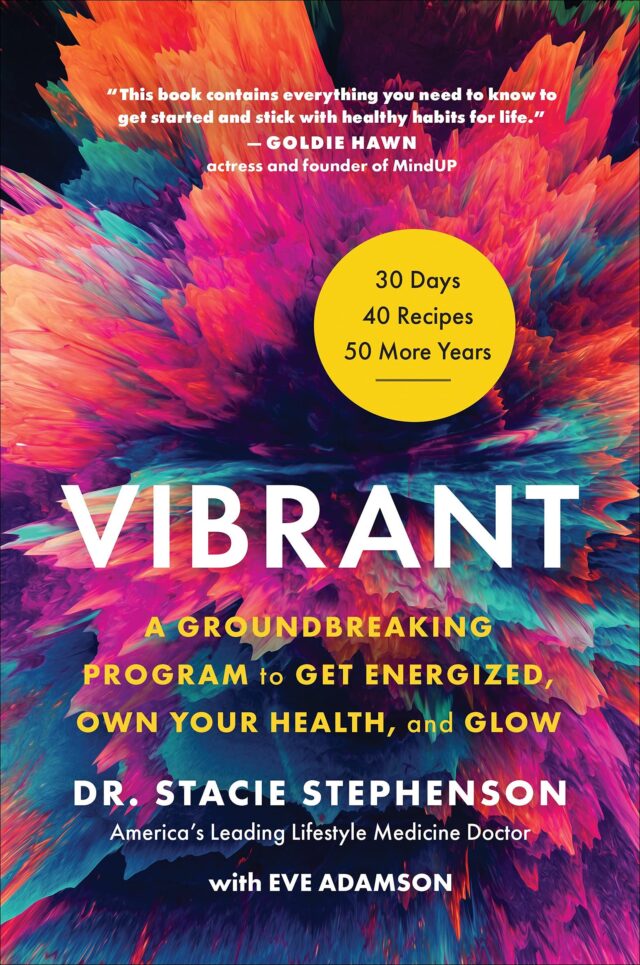
Purist founder Cristina Cuomo chats with Stacie Stephenson, an integrative medicine doctor and author of Vibrant: A Groundbreaking Program to Get Energized, Own Your Health, and Glow. Stephenson’s groundbreaking program is designed to empower people of all ages to get energized and take control of their health. Most recently, she is the founder of a new digital platform, Vibrant Doc, which makes integrative medicine concepts an optimal wellness experience accessible to everyone. Originally a competitive figure skater, Stephenson changed career paths after suffering high stress levels and a multitude of injuries on the ice. She has found her true calling to help others, and now focuses on functional, anti-aging and natural medicine modalities, and has developed a foolproof method to unlock your inner glow. Here, she breaks down an emotional and physical well-being diet for Purist in her book, which is available on Amazon.
Cristina Cuomo: You started a very vibrant health care practice. Once you went down that path, you knew this was it. How did you create this protocol of vibrant living, and what does it mean to live vibrantly?
Stacie Stephenson: We all know that woman: the woman who walks in a room and you think, “What is her skin care routine? What vitamins is she on? What does she eat?” The “What you are eating?” question is No. 1. It translates directly to your inner glow and vibrancy, health and wellness. This, as well as exercise, is connected to longevity. I think Americans have thought of exercise as a tool just to look visually better. We all chase perfection, and I don’t want us to keep picking apart our body parts. Exercise translates to actual energy in the body, as it triggers our cells to produce more energy. This is why we want to do it, and also for the health of our brain. When you exercise, your brain produces a critical protein called brain-derived neurotrophic factor (BDNF) that improves your brain function, enhancing attention, focus and memory, and also seriously reduces the risk of Alzheimer’s and dementia over time.
CC: Is there a point in which we can say that it’s too late to begin an exercise routine, and movement is futile? Can you change the course of your future if you take the initiative?
SS: The simple answer is that it’s never too late. Exercise, movement and fitness at any time in your life and in any way all translates to value. Of course, different exercises and levels burn different numbers of calories and affect different parts of the body and hormones in different ways, but select the activity that works for you, whatever that is. If it’s yoga, fabulous. Weight training, fabulous. Weight training is great for maintaining bone density. You don’t even need to go to the gym; you can use bands or lift small things around the house. You can do small spurts at home throughout the day if you tend to get distracted. Don’t beat yourself up about quitting; just get back on the horse. We know that 30 to 60 minutes a day is the sweet spot for longevity, brain health and blood sugar.
CC: You talk about this physical modality of movement, but what are other modalities to achieve emotional well-being?
SS: One piece I focus on in the book is relationships. The Vibrant Triad consists of diet, exercise and connections with others. Let go of toxic relationships, and work on the good ones, including your relationship with yourself. As women, we tend to pour outward but rarely do we get restored.
CC: So make time for friends and family, and talk things through with loved ones.
SS: You can really make an impact on your health by improving relationships with the people around you. Watch out for emotional vampires—you leave interactions with them or hang up the phone and realize that they take and take and don’t give anything back. It’s OK to let those go with compassion and recultivate more reciprocal relationships. Most successful people surround themselves with positive people they can learn and grow with.
CC: You were in a toxic relationship, which is why you know so much about the need to get out of a toxic relationship: because it’s physically debilitating. People are known to get chronically sick within the context of a toxic relationship. How did you turn the corner and what did you do to get yourself to a better place?
SS: When women are in domestic abuse situations, what is predominantly affected is the adrenal glands. You’re getting progressively more fatigued and it affects your hormone function. Just like in competitive figure skating, where I had suffered injuries and illness, I had overly taxed myself. When I tested my hormones at the time I had no functioning estrogen, progesterone or cortisol. Imagine trying to get the motivation to get out of a situation when you’re in that space! What kept me going was envisioning a future I could have only if I got out. I realized I could start my life over.
CC: The vibrant triad is critical to healthy living. Let’s talk about diet now. No one teaches us this in our youth. You get to college, don’t know how to cook, and you turn to junk. How do you get your nutrition in order?
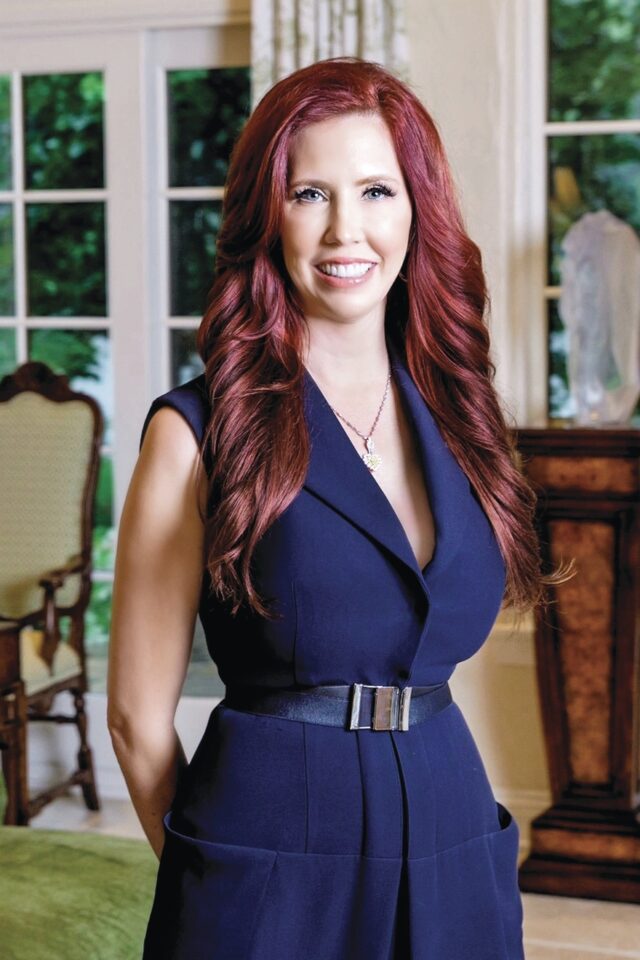
SS: What is the one thing you do consistently to stay alive? It’s eating. You’re in charge. Maybe you didn’t learn it in school, but it’s not that confusing. I want to urge everyone to have a lifelong sustainable plan. We need to eat a fresh fruit and veggie diet, good lean protein, fiber and water. The protocol I’ve created is a gluten-free, low-sugar and low-carb diet. The rates of gluten and dairy sensitivity are much higher than you’d believe. The gluten-free diet movement is not a fad. It’s nutritional science that has permeated into a greater public consciousness. Even if you’re not sensitive, wheat products are extremely inflammatory. Eliminating them is going to lower inflammation and carb intake. At the end of the day, grains are sugar. I’ve eliminated dairy because I don’t digest it well. If you want to keep your metabolism in check and body fat down and work on gut bacteria, you should cut out dairy as well. I’d rather you get your protein, calcium and vitamin D from other sources.
CC: Your book also comes with a host of recipes, which are so great for that old-school traditional recipe box! They’re great ideas that look easy, including the spiced Mediterranean salmon with burst tomato relish over sweet potato puree. Vibrant mini pumpkin pies, which are great to make this season.
SS: When people start a new diet they want to know what to buy in the store and what to have in their pantry. So there’s a food list in the book as well as recipes. Some people intellectualize it, and they can’t think of it in their head and figure out their meals, so the recipes help. I’ve personally eaten every single one of those recipes and refined them. I’m OK in the kitchen but I don’t love it. So I wanted to give people recipes that can be put together more easily without processed foods.
CC: What if you’re not a great cook? What do you do if you’re ordering out a lot?
SS: You’re going to have to be really careful with takeout. If you’re not great at cooking, do a really good job with your shopping. The busier you get, try to eat more raw food, things that aren’t cooked a whole lot, or simple recipes. If you do your own shopping, you’re in charge of what you’re eating. One thing I’m excited about is the number of recipes out there now focused on healthful diets. In restaurants, you still need to be careful and read the menu, but usually you can find plenty of good choices. Don’t be afraid to ask questions. At the end of the day, you need to eat a basic protein and a vegetable. When you’re traveling, pack go-to snacks—anything you can control so you’re not as likely to grab a burger or sugary stuff. Bringing healthy foods in your carry-on can get you through long flights.
CC: This vibrant triad is essentially a lifestyle remedy. It incorporates all the elements we need to succeed and live longer and happier. Tell us about the “wins” one experiences when following the program in the book.
SS: At the end of every chapter there are three wins you can implement immediately. One win, for example, may employ the rule of halves: cutting your coffee in half, cutting your wine in half, cutting your sugar in half. You begin implementing each win, read the next chapter, implement more, and by the end of the book you’ll be doing the whole program and won’t even realize it. At the end, we put the whole program in a chapter so you can see it in its combined form. We also provide a two-week meal plan, which you can repeat. If you can stick to something for 21 or 30 days, that’s enough to gain habits and make lasting change. We also have QR codes embedded in the book. These link to self-evaluations and more recipes that weren’t included in the book. We have self tests on emotional well-being and relationships, on caloric intake and understanding vitamins, and how you should analyze and select your vitamins.
CC: Energy is such a big subject, including how to get more energy. Is low energy a cause or a symptom?
SS: It really is both. I can get drained really quickly. Energy is the fountain of youth. In comes from food, which your body turns into energy. Eat nutrient-dense foods and reduce things that will pull our energy away, like coffee. You can enjoy it in moderation, especially organic coffee. There are also plant-based coffee substitutes. Be mindful of your vitamin intake, and especially include essential fatty acids. We desperately need those for our energy. Healthy fats are critical. Yoga and exercise will replenish your energy.
CC: One of our readers says that they have a chronic illness. How do they maintain energy when they’re dealing with something like that?
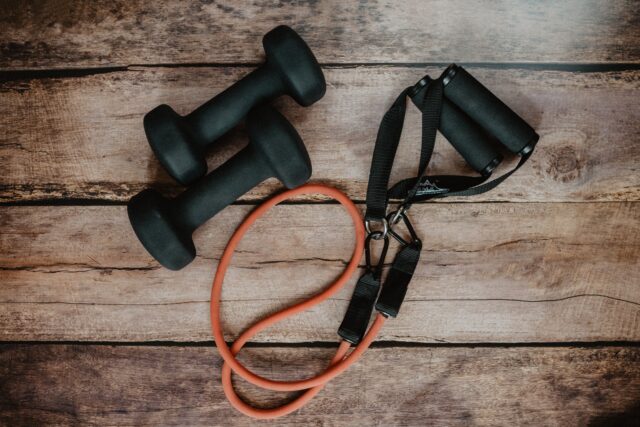
SS: It depends on your particular situation. A simple thing is to stick with supplements, and don’t compromise on your nutrition. My “Desert Island 5” vitamins are C, D3, B complex, EPA/DHA like fish oil, and magnesium, with or without calcium. Those are very approachable and very affordable. Cut out sugar and alcohol. Choose an activity that works with the illness you’re facing. For example, if you struggle with your joints, choose swimming, which is low impact on the joints. Don’t let yourself be defined by your illness. You are not your disease, you are still you.
CC: Tell us about Vibrant Doc. How did you evolve this 30-day plan into a business?
SS: I wanted to share it with the world. I found it frustrating that I couldn’t reach more people. Over the years, I found so much research and wanted to be a curator for both men and women. I wanted to boil down the most intelligent choices proven by science. How can I get you there so you don’t have to do the work, and build you something you can follow for the rest of your life? I used to tell my patients in my private practice, “I hope that in a year you won’t need me anymore.” I wanted my patients to embody this lifestyle so that it becomes second nature. Then I wanted that for everyone.
CC: We know how important it is to do all these things and create immunity, prevent disease and inflammation, and be our best selves. Talk about the concept of “glow” and how we can achieve it.
SS: Glow comes from the Vibrant Triad: Food, movement, and connection. We get wrapped up in the physical facets of health and ignore the spiritual part, which starts with connection. Spiritual work is tied to relationships with others, with yourself and with nature, too.t doesn’t have to be about organized religion, but it can be. When you honor all these elements, you get that inner glow and confidence.I hope Vibrant is a forever program that will help everyone.





